The Iconic 1957 Chevrolet 210 Wagon: A Classic American Family Hauler
The 1957 Chevrolet 210 wagon holds a special place in the hearts of vintage car enthusiasts. With its iconic styling and ample cargo space, the 210 wagon was one of the most popular American family cars of its era. This full-sized station wagon provided practicality and style in one attractive package.
An Overview of the 1957 Chevrolet 210 Series
The 210 series was Chevrolet’s mid-range lineup for 1957, slotting in between the upscale Bel Air and the budget-friendly 150 models. The 210 came as a two-door or four-door sedan, a four-door wagon, and a two-door utility sedan. The Nomad, Chevrolet’s stylish two-door station wagon, was also part of the 210 lineup.
Under the hood, 210 models came equipped with Chevrolet’s new Turbo Fire 283 cubic inch V8 engine. Horsepower output ranged from 162 hp to 283 hp depending on configuration. A three-speed manual was standard, with two-speed Powerglide automatic available as an option.
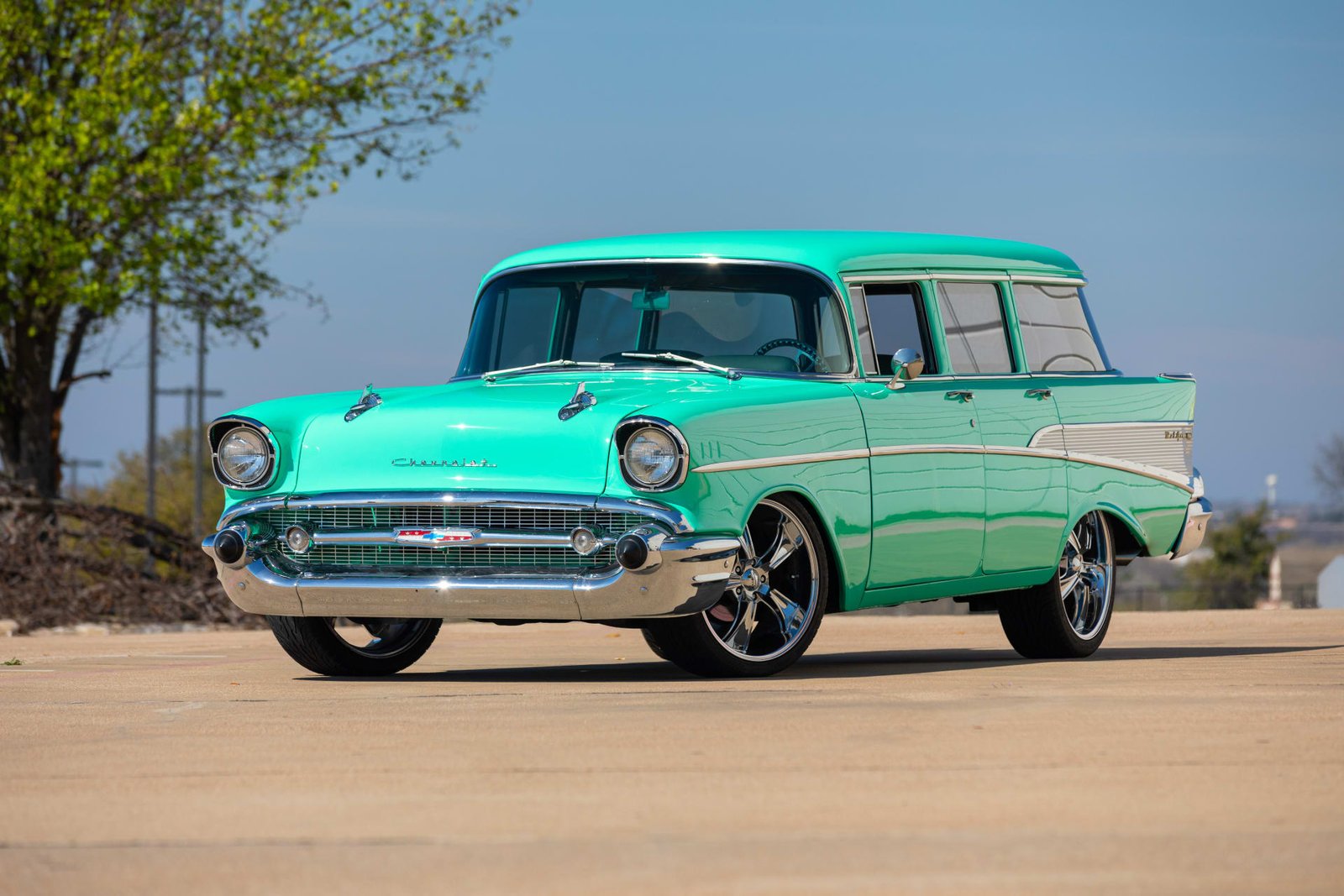
Styling and Exterior Features
The 1957 Chevrolets sported all-new styling compared to the previous year’s models. Design elements included:
- Sweeping hood and fenders
- Wraparound windshield
- Hooded headlights
- Prominent bumper guards front and rear
- Distinctive tailfins
Two-tone paint schemes helped highlight the 210’s flowing lines. Chevrolet’s designers succeeded in making the 1957 models look longer, lower and wider than before.
Chrome trim abounded on 210 wagons, including a full-length spear along the side. The Nomad stood apart with its unique styling cues like the sloping rear roofline. Overall, the 1957 Chevrolet 210 had a cohesive, attractive look in keeping with 1950s American automotive trends.
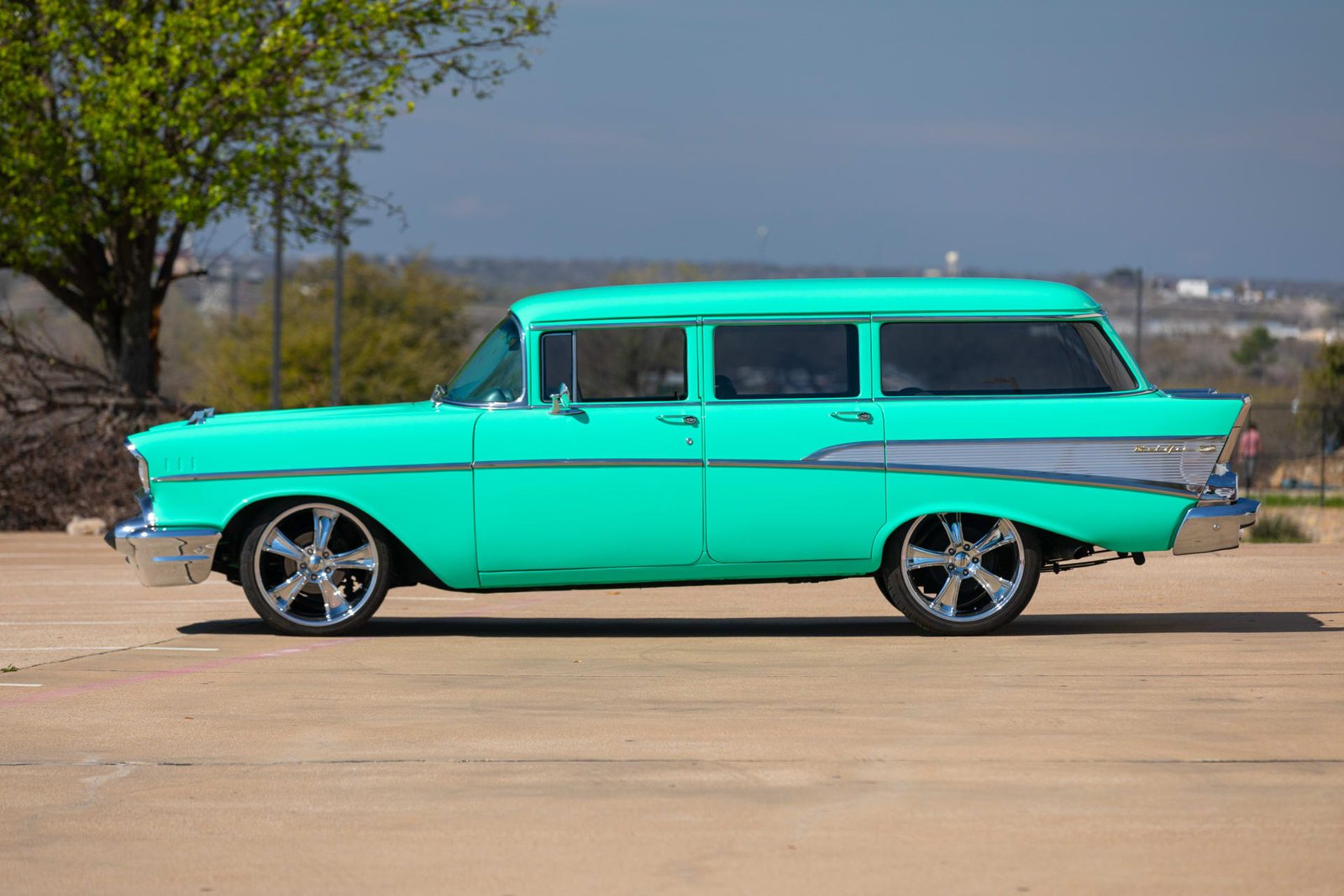
A Spacious, Comfortable Interior
210 wagon interiors focused on roominess and comfort. Front bench seats provided space for six adults in the standard models, while the Nomad seated five. Chevrolet increased hip and shoulder room compared to prior years, optimizing the already generous dimensions of the 210 body.
A functional interior layout made accessing cargo a breeze in 210 wagons. The rear seat folded down, creating a flat loading floor. Tailgate access was a convenience not found on every station wagon of the era.
Interior appointments included cloth and vinyl seat materials, chrome trim on the dashboard and door panels, and black rubber flooring. Power options like windows, seats and steering helped add luxury.
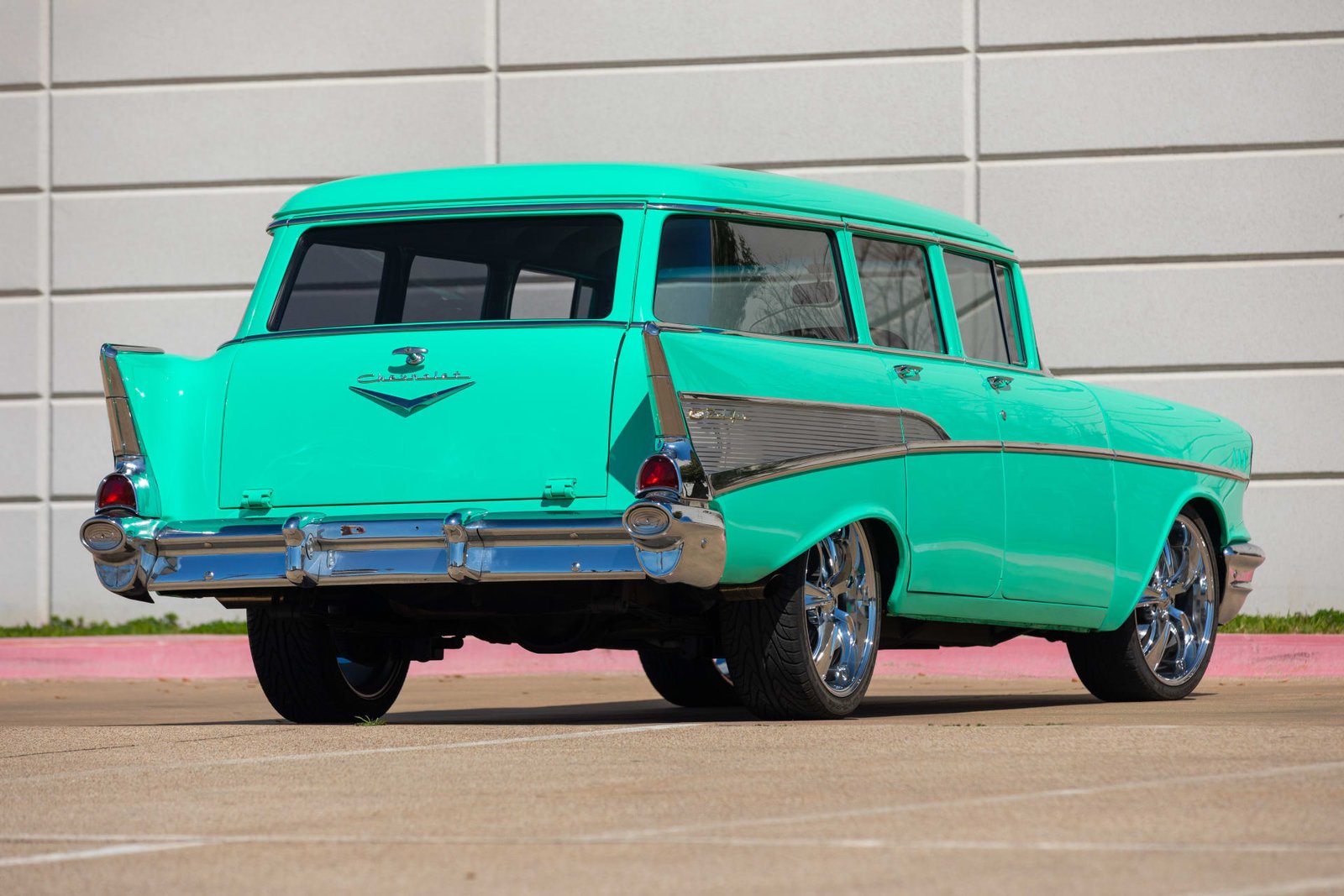
Capable Performance from the Turbo Fire V8
The 210 wagon’s standard engine for 1957 was Chevrolet’s new 283 cubic inch Turbo Fire V8. This motor utilized mechanical lifters, a higher compression ratio, and a four-barrel carburetor to generate an impressive 185 horsepower. Performance enthusiasts could opt for the more powerful Super Turbo Fire option, which increased output to 220 hp.
For most buyers, the standard Turbo Fire V8 delivered smooth, strong acceleration and decent fuel economy. The Powerglide automatic made driving simple, while the base three-speed manual gave drivers more control. Power steering and power brakes added driving ease.
With its lightweight construction, the 210 wagon handled reasonably well for its size. Owners reported that it felt composed on the highway, with responsive steering and braking. The optional air suspension provided a remarkably smooth ride. Overall, the 210 wagon delivered satisfying everyday performance.
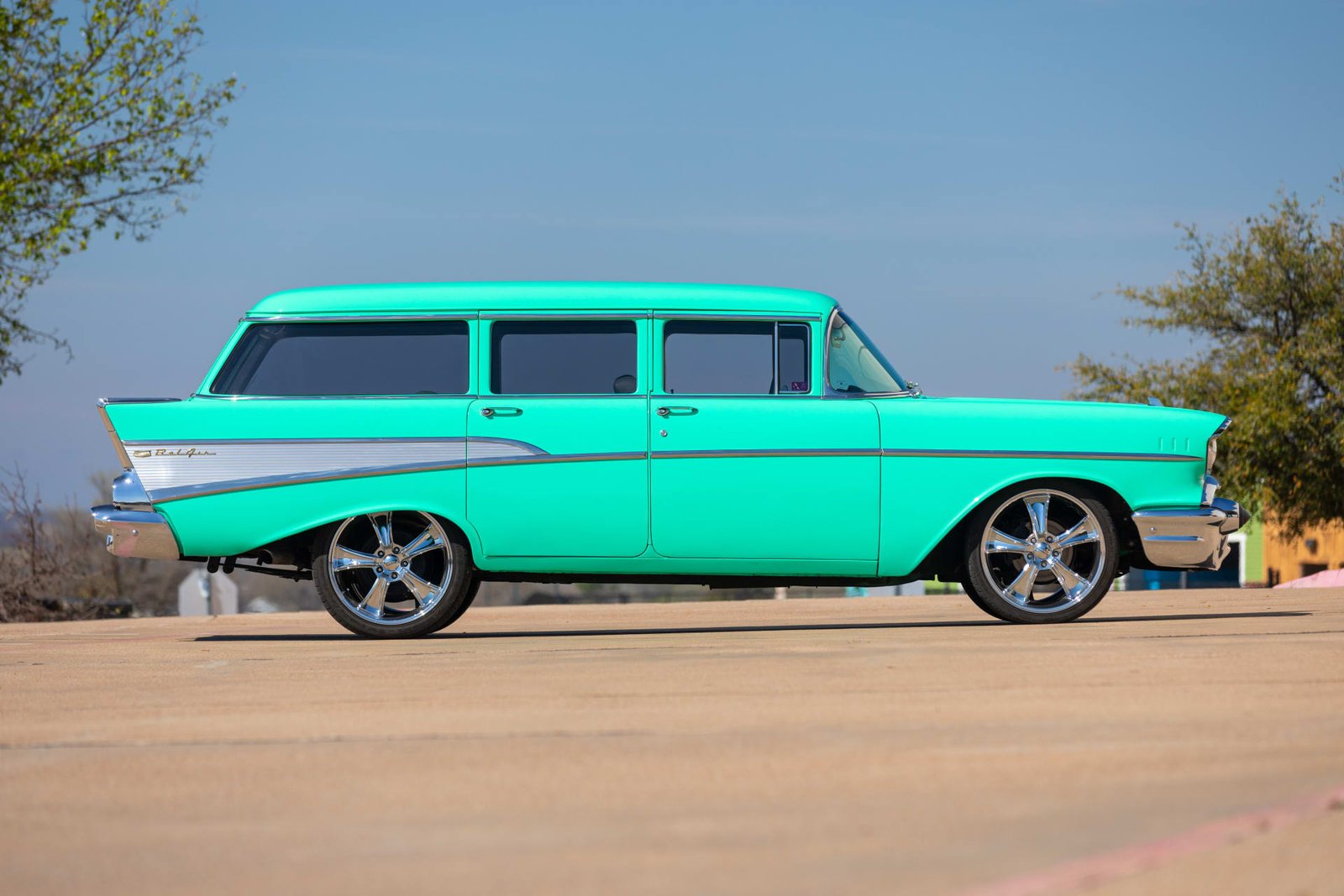
Carrying Capacity to Handle Any Task
With up to 97.5 cubic feet of cargo space, the 210 wagon could accommodate any job. The tailgate opened wide for easy loading, while a retractable rear window provided ventilation. Optional roof racks allowed owners to transport oversize items.
The rear seat folded down to open up additional cargo room. With both rows of seats folded flat, the 210 wagon could swallow up to 68 cubic feet of gear. This versatility made the 210 popular with families and tradespeople alike.
Clever details included a reversible rubber floor mat, which featured carpet on one side for passenger duty and rubber on the other for messy hauling jobs. Optional concealed storage compartments hid valuables out of sight.
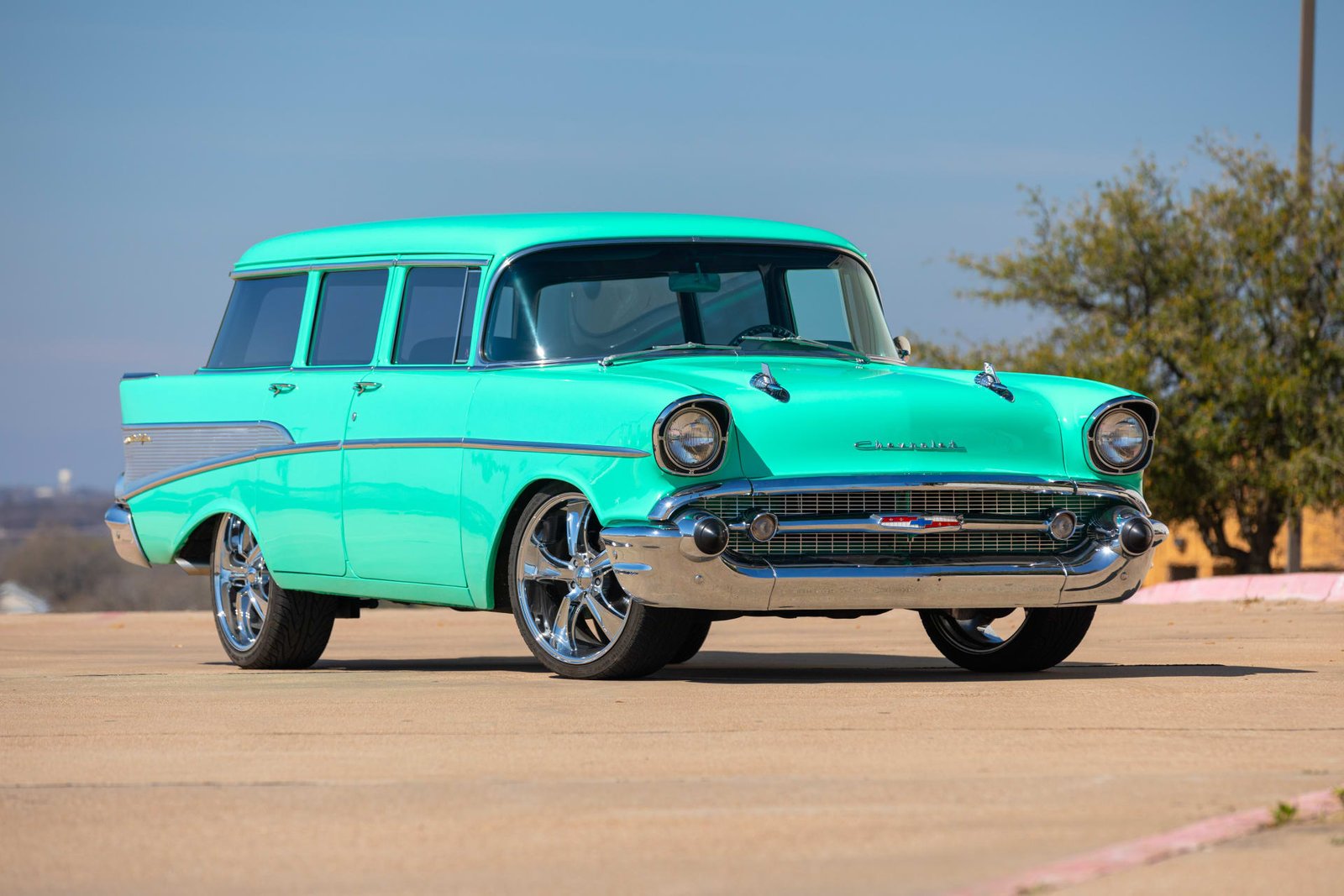
Collector Interest and Restoration Notes
Today, the 1957 Chevrolet 210 wagon remains popular among collectors. Its unique styling and ample size make it a fun, usable classic. Since utility vehicles are valued in the vintage car market, the 210 wagon’s practical attributes make it especially desirable.
Finding a 1957 210 wagon takes diligence, as only about 30,000 were built. Nomads are the most challenging to locate due to low production numbers. Parts availability from restoration specialists helps keep 210 wagons on the road.
Potential buyers should watch for rust-prone areas like the floor pans, roof, and lower fenders. Luckily many replacement panels are being reproduced today. Stashed away 210 wagons can still be found needing total restoration as well.
When shopping for a 210 wagon, the top priority should be finding the best original example possible. Correct details like the engine, transmission, colors, and options should be preserved whenever feasible. Patina has value, but rust repair and interior refreshment may be needed.
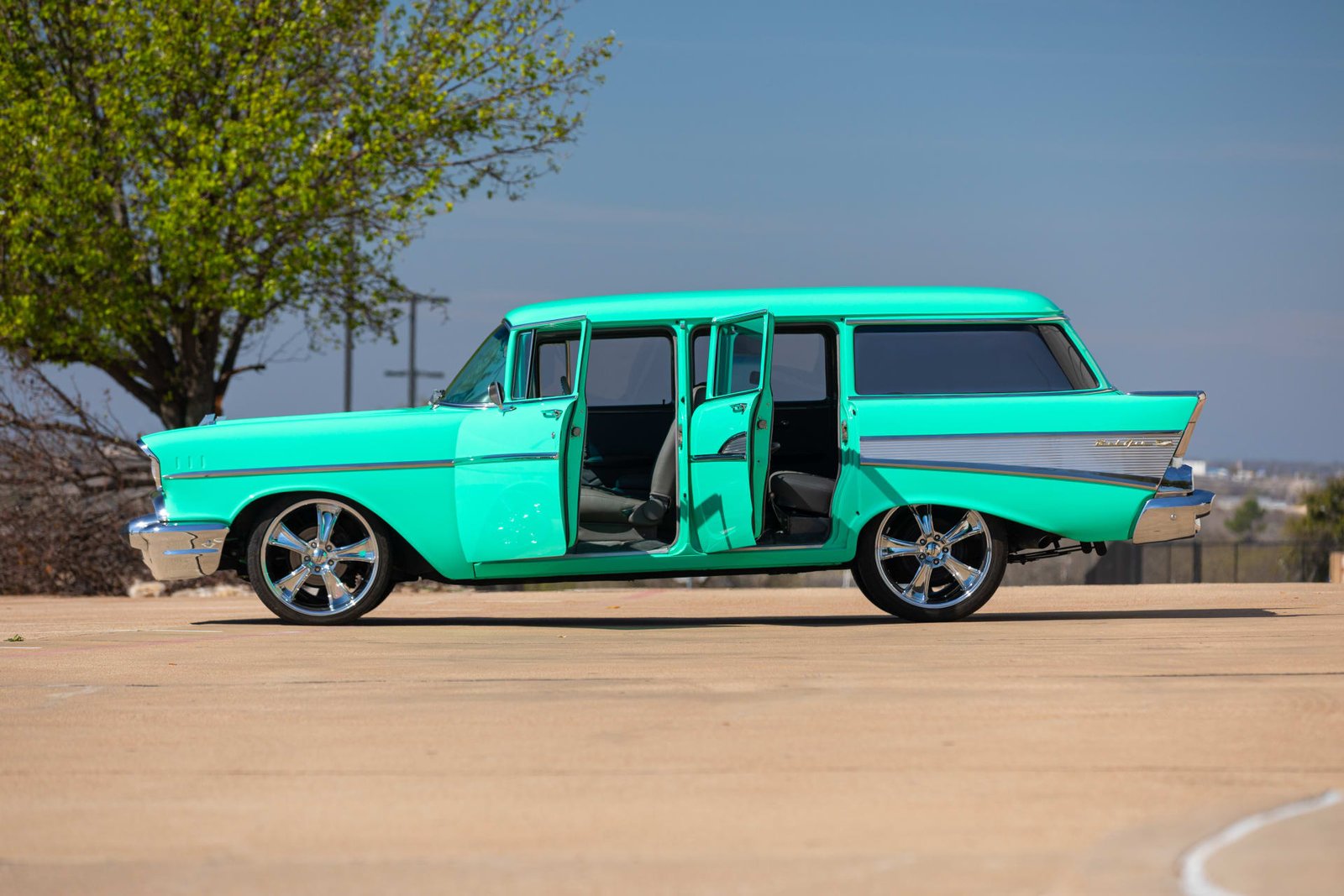
Owning and Enjoying a 1957 Chevrolet 210 Wagon
For enthusiasts seeking a vintage wagon, the 1957 Chevrolet 210 is a wonderful choice. Its stature and style stand out at any car show. Long road trips are no issue thanks to the smooth V8 engine and roomy interior. Families will appreciate the generous cargo and seating capacity.
Proper maintenance and minor upgrades enhance the 210 wagon’s drivability. Reproduction parts from restoration companies keep these classics in top shape. Joining the wagons a classic car club connects owners with a wealth of technical knowledge.
The 1957 Chevrolet 210 wagon has secured its place as an automotive icon. For collectors lucky enough to own one, enjoying and preserving its rich heritage is a rewarding endeavor. This classic wagon remains a standout, just as it did when Chevrolet dealers first introduced it 65 years ago.
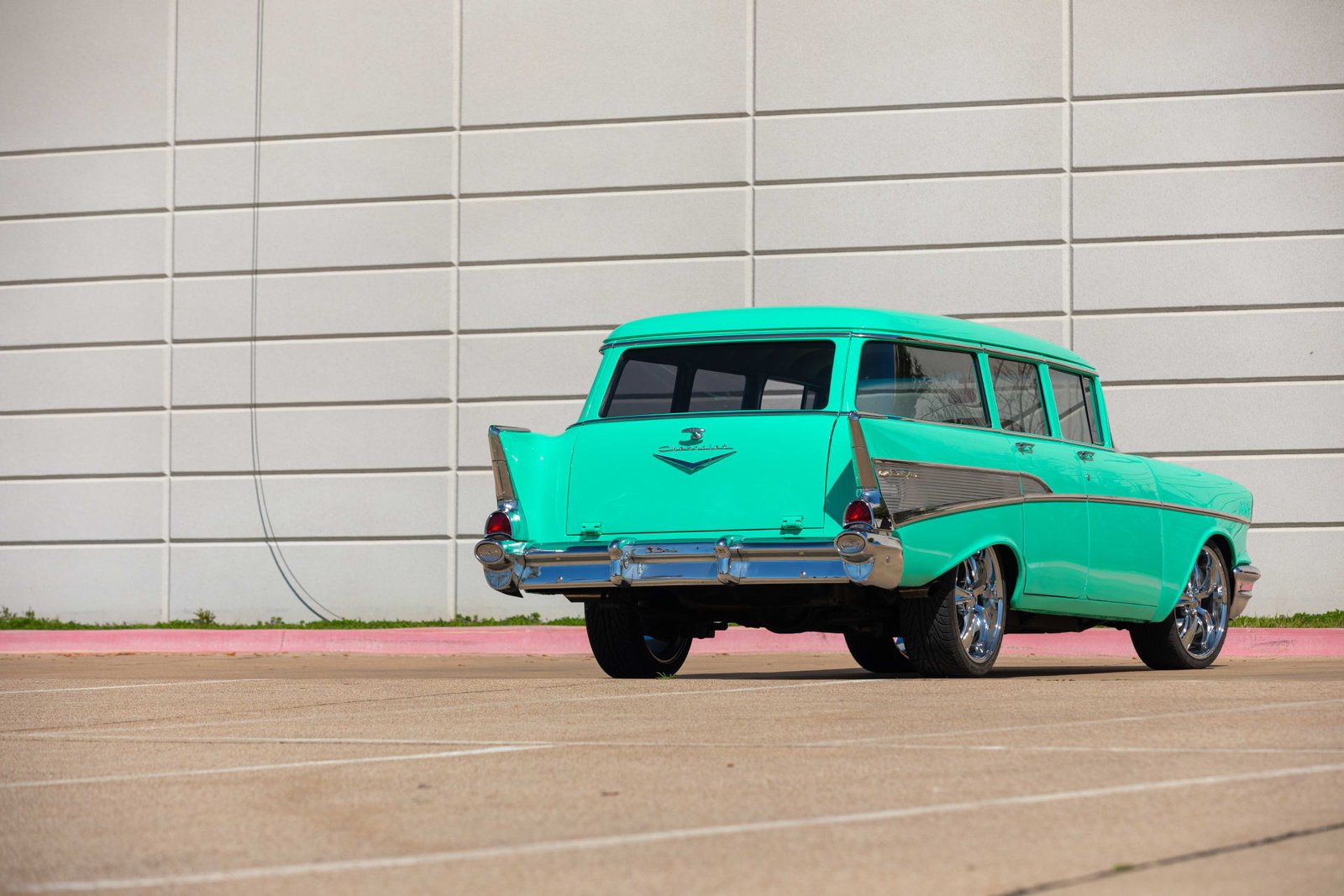
Frequently Asked Questions about the 1957 Chevrolet 210 Wagon
Here are some common questions about the classic 1957 Chevrolet 210 wagon:
How many 1957 Chevrolet 210 wagons were built?
Around 30,000 210 wagons rolled off Chevrolet assembly lines in 1957. The Nomad, a unique two-door 210 wagon style, accounted for just under 7,000 units that year.
What engine options were available in the 1957 210 wagon?
All 210 wagons came equipped with Chevrolet’s 283 cubic inch Turbo Fire V8. Horsepower ratings ranged from 162 to 283 hp. The two-speed Powerglide automatic or three-speed manual transmission were available.
What were some key options for the 1957 210 wagon?
Popular options included power steering, power brakes, power seats, air conditioning, air suspension, automatic transmission, and power tailgate window. Chevrolet also offered convenience options like roof racks, concealed storage, and an exterior luggage rack.
What production figures did 1957 Chevrolets achieve?
Chevy built over 1.5 million cars in 1957, including around 580,000 Bel Air models. Total sales set a new record for Chevrolet, confirming its popularity in the booming postwar market.
How much does a 1957 210 wagon sell for today?
Pricing varies widely based on condition and authenticity. Typical asking prices fall between $20,000 to $50,000. The most desirable Nomad wagons can fetch over $100,000 at auction in excellent restored or all-original condition.




